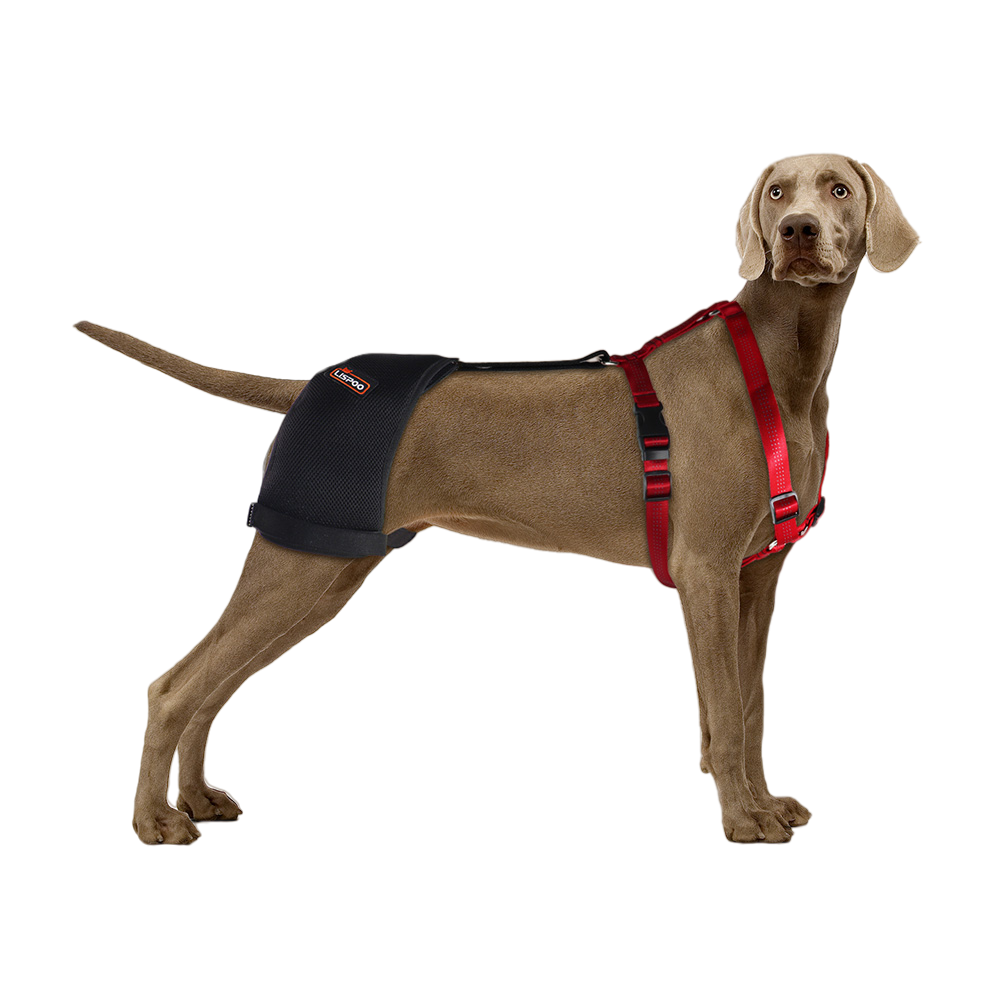In this article, we’ll walk you through some of the most common symptoms of hip dysplasia so you can learn more about how to identify them. With this information, you can figure out whether or not you need to speak with your veterinarian about the potential of hip dysplasia in your own dog.
What is Dog Hip Dysplasia?
The hip joint is a “ball and socket” joint. The ball is the head of the femur. Normally, the head of the femur fits very tightly within the acetabulum. In hip dysplasia, the joint does not fit together snugly, causing instability. As a result, the joint will partially subluxate or move in and out of the socket. This may cause cartilage damage and severe arthritis in dogs as early as one year of age.
Common Symptoms of Hip Dysplasia
Lethargy
Lethargy is a common symptom associated with hip dysplasia. Since it usually hurts dogs to stand up and move around when they have this condition, they become lethargic and less interested in getting up to do anything more than they have to.
Keep in mind, however, that lethargy is also a symptom of many other conditions that might affect your dog. If this is the only symptom you notice, you should work with your family veterinarian to determine the underlying cause and don’t necessarily assume it is hip dysplasia.

Difficulty Moving
If your dog has trouble moving around, this may be another indicator that he has hip dysplasia. Dogs with this condition may have difficulty getting up out of bed and will especially have trouble running, jumping, or climbing stairs.
Hind End Lameness
Hind end lameness is a fairly solid indicator that your dog could have hip dysplasia. This condition will cause the back end of your dog’s body to become much harder to move, and it can sometimes freeze up or become impossible for him to control.
Lameness in the hind end may not occur until the later stages of hip dysplasia. Chances are good that if your dog is showing this symptom, then he has also shown earlier signs of beginning stages of the condition for a while. Hind end lameness is not associated with many other conditions but should still be examined by a veterinarian to be sure.
Unusual Gait
An unusual or odd gait may signify that your dog has hip dysplasia. Some individuals refer to the hip dysplasia gait as a “bunny hop,” as it is similar to the way a rabbit moves when walking. It is a very strange-looking gait for a dog. Since it is quite noticeable, it is sure to stand out as a symptom if your dog shows it.
An unusual gait may also be related to several other problems and will need to be checked by your veterinarian. However, if your dog shows an unusual gait along with any other symptoms on this list, then the chances are more likely that he might have hip dysplasia.
Stiffness and Pain
Finally, your dog may have stiffness and pain if they have hip dysplasia. Even if he is able to move around, he may be stiff when doing so, and it may take him a while to loosen up when he gets out of bed in the morning.
Your dog may also start to guard their hips and legs as the pain increases. If he is reluctant or will not let you pet his hind end or touch his legs, or if he shows signs of fear or aggression when you try to do this, hip dysplasia is a likely cause.
Treatment Options
Dog hip dysplasia surgery for severe cases in medium to large dogs can be expensive. Options include Triple Pelvic Osteotomy, Femoral Head Osteotomy, and Juvenile Pubic Symphysiodesis, which can each run from about $1,000 to $3,000 per hip. Total Hip Replacement is the most expensive at $3,500–$7,000. If invasive surgery is not the best choice for your dog, look into non-surgical, conservative management options, such as dog leg braces, physical therapy, weight control, acupuncture, anti-inflammatories, and massage therapy.
LOVEPLUSPET specializes in flexible, adjustable, and affordable dog leg braces. The Dog Hip Dysplasia Brace provides support and stability to minimize pressure on dog's hip and allow for post-surgical healing or pain-free exercise. Additionally, leg braces for hip dysplasia may slow the progression of this chronic issue.



0 Comments